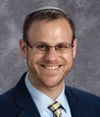The Man’s Seder

Originally published on Tradition Online.
What’s happening? A March 26, 2015 article in the Wall Street Journal detailed the fifth annual “Guys Night Out and Seder Summit” at Congregation Beth Sholom in Potomac, MD. The event “drew nearly 500 men who came to sample 900 pounds of kosher ribs and multiple brands of Scotch and to get fresh ideas for holding the Passover Seder.” This is far from the first such event in the Modern Orthodox community, and it has maintained enough staying power to return following the pandemic. This past April, for instance, Congregation Etz Chaim of Livingston held its 7th annual “Man’s Seder.” OU Israel has hosted multiple such events, including one featuring a “delicious BBQ buffet and selection of alcoholic beverages and soft drinks.” And while the concept of the Man’s Seder first became popular in the Reform movement – itself a counterpoint to the Women’s Seder, the Freedom Seder,or the like – its introduction into the Orthodox community is relatively new, and seems to have struck a chord.
Not unexpectedly, these pre-Pesach events preparing men for the upcoming Sedar come in different flavors. Some have been more informal, focusing on a mix of socialization and preparation for leading the Seder. Others have been more formal, sit-down mock Sedarim punctuated by food, friends, and divrei Torah to accompany key sections of the Haggadah. Some were conceived by the local rabbi, others by lay leaders. Some attracted primarily shul members, while others attractingJews from unaffiliated to Haredi. But whatever the format, the common denominator is that these all-men’s programs have proven immensely popular, with even more set to relaunch this year with the easing of pandemic-related restrictions.
Whatever their precise format, the Man’s Seder is not the only such program to have achieved recent success. In the last decade, new men-only events have begun to sprout up in Orthodox synagogues. A search online reveals a flier for a “wildly successful Scotch, Steak, and Study” event and numerous similar programs. Some men’s Daf Yomi groups, such as that of Mercaz Daf Yomi’s R. Eli Stefansky, include food, camaraderie, and a question-and-answer session. Some shuls have even co-opted the name “Kiddush Club” for men’s events that take place during weekdays, without the need to duck out from the Haftarah and sermon.
These new programs come at a time when old-style men’s clubs have been in decline. And while efforts to revive these clubs have been underway over the last 10-15 years, these efforts have predominantly taken place in the non-Orthodox community, most urgently in response to Sylvia Barack Fishman and Daniel Parmer’s 2008 monograph, Matrilineal Ascent/Patrilineal Descent: The Growing Gender Imbalance in Contemporary Jewish Life (2008). The authors paint a dark portrait of “contemporary liberal American Jewish societies that comprise the vast majority of American Jewry, in which men are often not invested in and engaged by their Jewishness.”
Other men’s events in the Orthodox community are similarly less common or significant than they once were. Kiddush Clubs, for example, arguably lack the transgressive, men’s only allure they once held. In many communities, the very suggestion of men-only shul programming invites opposition on the grounds of female exclusion. This leaves men in Orthodox shuls with fewer opportunities for socialization with other men. Following COVID, minyan attendance has fallen off in many communities, leaving fewer opportunities for socialization than were previously available. These factors are compounded by men’s limited tendency to establish and maintain friendships in comparison with women, and the pervasive sense of loneliness in our age of remote technologies and diminishing participation in religious communities. Against this backdrop, the increasing popularity of the Man’s Seder and other men-only programming in Modern Orthodox circles is both understandable and especially noteworthy.
What does it mean? At one level, the Man’s Seder is meant to provide men leading Sedarim with the skills and confidence necessary to orchestrate the ritual meal properly. Etz Chaim’s invitation reads, “Have you ever wanted to learn how to lead your own Pesach Seder? Are you looking for ways to make your Seder more fun and inspirational?” The implication is worth noting: notwithstanding the dramatic changes that characterize our post-feminist Orthodoxy, the norm in the vast majority of households is for the father of the family to lead the Seder.
But something deeper is at play. In a theme echoed in the publicity for other Man’s Sedarim, the Etz Chaim flier continues, “Are you looking for a night out with your buddies?” Men are looking for social connections and outlets in male-only environments. Steak and scotch, and riffs on “Kiddush Club,” appeal to men looking for more camaraderie in an environment that feels “masculine.”
The rise of the Man’s Seder suggests that some challenges confronting liberal American Jewish movements are trickling into segments of the Modern Orthodox community. The normalization of egalitarian social spaces in Modern Orthodox synagogues, while positive in many respects, drives men to seek more men-only spaces. Many men are lonely in the wake of the pandemic, and they lack healthy social relationships.
Recent research supports the importance of homosocial spaces. Danny Kaplan and Amir Rosenmann demonstrated this in a 2014 article in the journal Psychology of Men and Masculinity. They challenge the assumption that men struggle to develop social relationships with their male peers; instead, they maintain that men simply tend to express their intimacy in different ways than women. According to Kaplan and Rosenmann, men tend to require side-by-side bonding experiences centered around an activity to socialize successfully. They contend that men “practice intimacy but in ways that involve less expectations for verbal self-disclosure…and engage instead in a ‘covert’ style of intimacy through the exchange of favors, joking behavior and nonverbal cues.” The Man’s Seder and similar programs appears to meet this need.
What questions remain unanswered? Between the displacement caused by the COVID-19 pandemic, the “shtibelization” of Orthodoxy, and the radical changes to gender roles throughout the West in recent decades, it remains to be seen how effectively our communities will meet men’s spiritual and social needs. Meeting those needs is particularly important in our community as doing so can be an important factor in successfully elevating men to a more engaged and satisfied religious level.
The unique challenges confronting men today raise further questions: Will we see an increase in men-only programming in Orthodox shuls or will this not develop widely (perhaps owing to men’s lack of initiative, anticipated or actual push-back from those opposed to men-only programming, or simply as a result of shul leadership’s lack of foresight)? Will men begin to feel displaced even in Orthodox settings as they feel in many liberal spaces? Will the physical and halakhic structure of shuls – including men serving as hazzanim and serving in rabbinic leadership roles – continue to perpetuate women feeling excluded, as illustrated in Erica Brown’s observations about women not returning to shul in the immediate aftermath of the pandemic? Or, will we succeed in making shul a place where both men and women overwhelmingly experience a strong sense of belonging.
As to men’s place in the synagogue and Jewish life generally, only time will tell. Ideally, as Richard Reeves urges in his recent book Of Boys and Men, we’ll come closer to a point where gender inclusion in our shul communities feels less like a zero-sum game and more like a whole-team effort. Both men and women, after all, played essential roles in earning our redemption from Egypt and our consequent freedom to serve God. As we usher in the upcoming Passover holiday season, both men and women deserve to experience individual psychological freedom and communal fraternity — in mixed as well as single-sex spaces, including the Man’s Seder, and far beyond.
